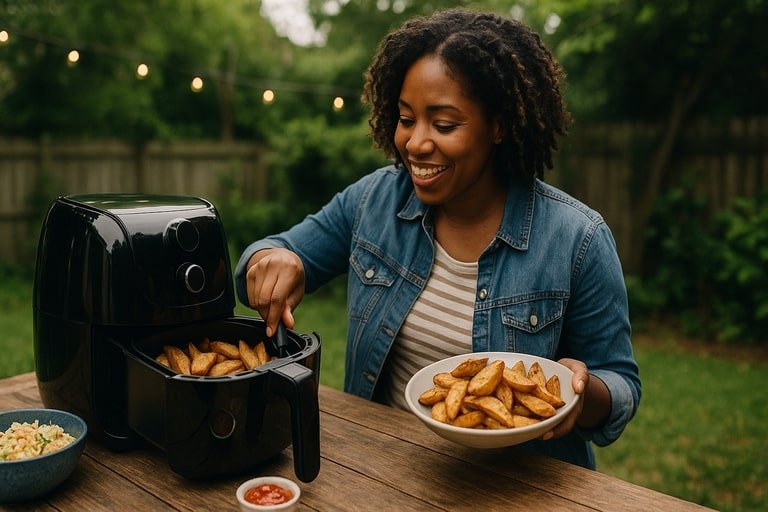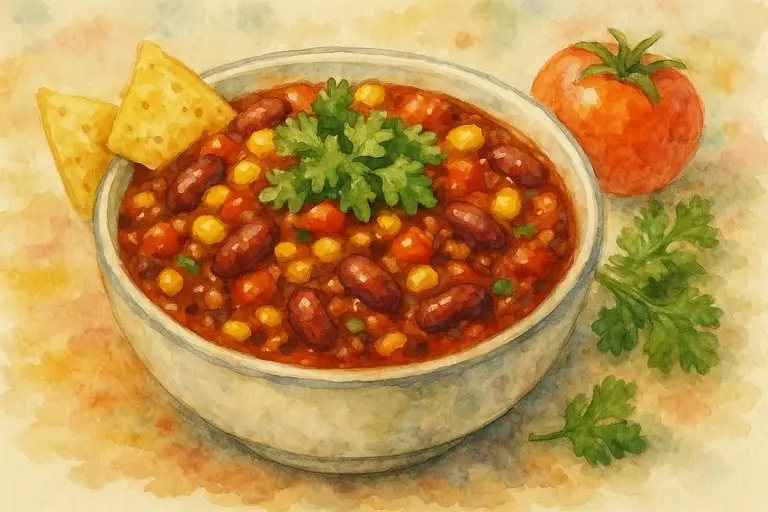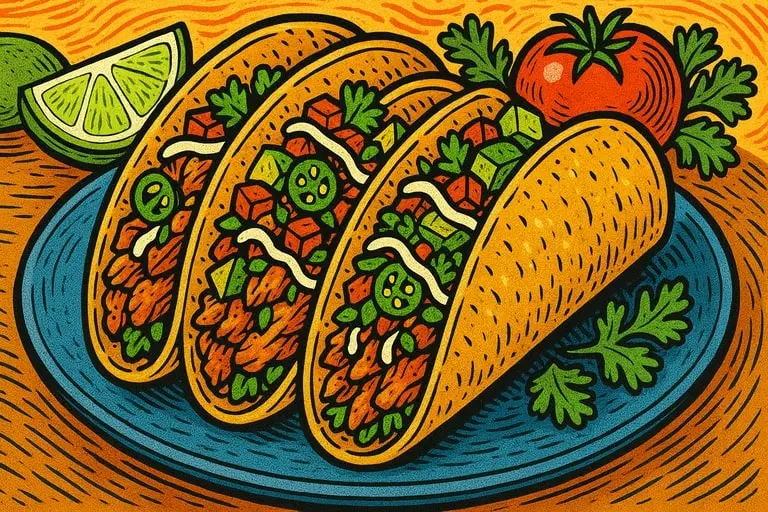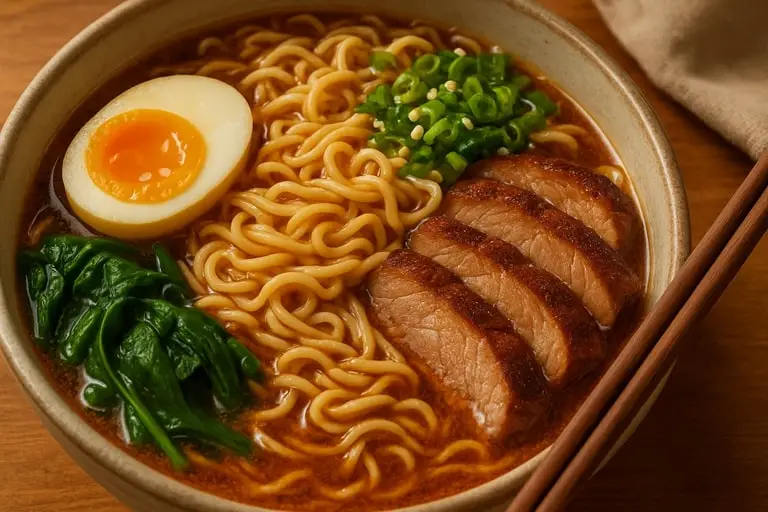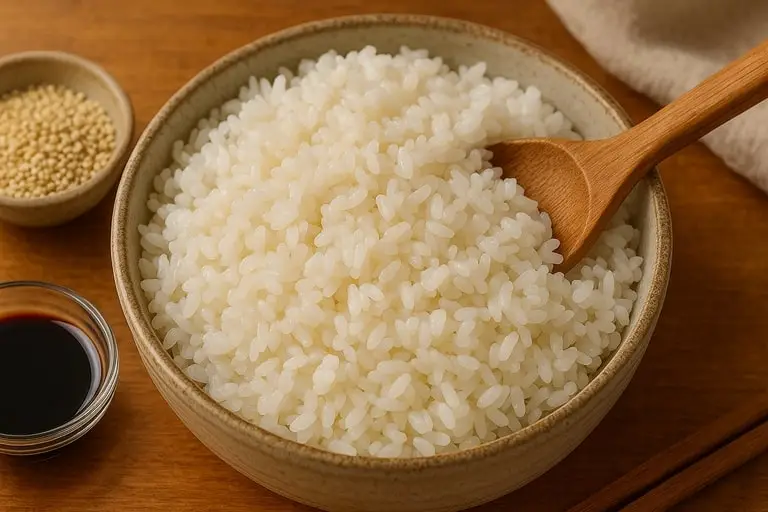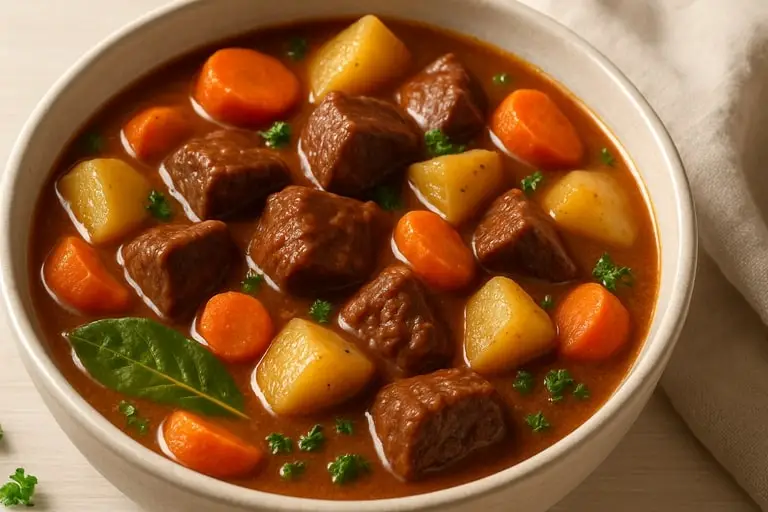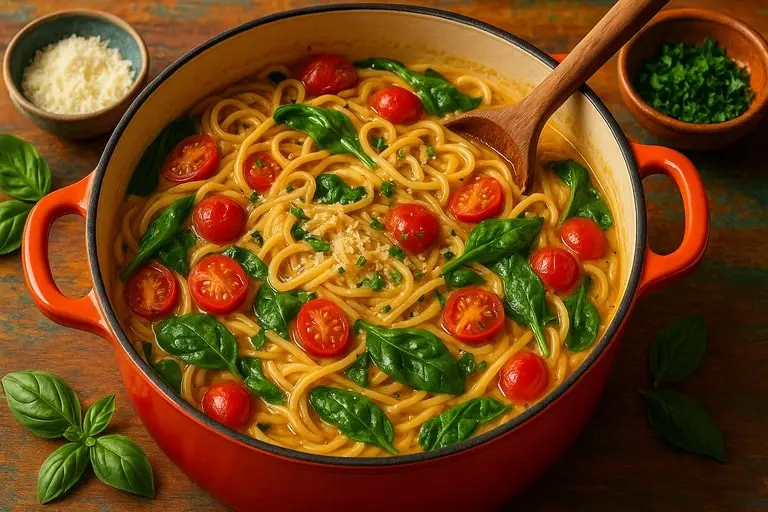Air fryer recipes have transformed modern kitchens by offering the indulgence of crisp, golden textures without the heavy reliance on oil that characterizes traditional frying. The technology behind air fryers revolves around rapid air circulation at high temperatures, creating the same exterior crunch one expects from deep frying, while using only a fraction of the fat. This innovation caters to contemporary desires for healthier eating without sacrificing sensory satisfaction. Understanding how air fryer recipes work and why they have become essential for home cooks reveals both practical and nutritional benefits that redefine daily cooking.
The central appeal of air fryer cooking lies in its ability to mimic frying through convection rather than immersion in oil. Foods such as chicken wings, fries, or breaded vegetables emerge from the fryer basket with crisp exteriors and moist interiors, rivaling their deep-fried counterparts. Unlike oven baking, where heat can dry out food, the enclosed environment of the air fryer accelerates caramelization while trapping moisture, producing results that surprise first-time users with their similarity to traditional fried dishes.
One of the strongest benefits of air fryer recipes is the reduction in oil consumption. A tablespoon or less suffices to coat ingredients, compared to cups required for deep frying. This reduction significantly lowers calorie and fat intake, making indulgent foods more compatible with balanced diets. Families aiming to improve long-term health find that air fryer cooking allows enjoyment of favorites without guilt, reinforcing consistent healthy habits without resorting to deprivation.
Air fryers also excel in versatility, extending beyond fries and chicken to include fish, vegetables, baked goods, and even reheated leftovers. Air fryer recipes demonstrate how delicate items like salmon retain succulence while gaining a delicate crust, or how roasted Brussels sprouts caramelize evenly with minimal attention. For bakers, small batches of muffins or cookies emerge evenly browned, while reheated pizza slices retain crisp crusts rather than soggy bottoms. Such adaptability positions air fryers as multi-purpose tools rather than niche gadgets.
Texture plays a vital role in why air fryer cooking resonates with so many. The crunch of breaded coatings or the blister of roasted peppers provides sensory pleasure often associated with indulgence. Achieving these textures without immersion in oil illustrates how technology reshapes perception: crispy no longer equates automatically with unhealthy. This redefinition expands culinary horizons, offering home cooks new approaches to comfort food.
The convenience factor cannot be overstated. Air fryers heat rapidly, often eliminating the need for preheating, and they cook food faster than conventional ovens due to compact design and concentrated airflow. Busy households appreciate how weeknight dinners shift from chore to manageable routine. Prepping chicken tenders or vegetable skewers becomes simple, reducing reliance on takeout and reinforcing control over ingredients and nutrition.
Air fryer recipes further encourage experimentation with seasonings and marinades. Because food cooks in a sealed basket, spices adhere tightly, and flavors intensify. A sprinkle of smoked paprika or a dash of cumin transforms simple potatoes into dynamic sides, while marinated tofu develops bold depth within minutes. The ability to experiment empowers creativity, making kitchens spaces of exploration rather than repetition.
From a sustainability perspective, air fryer cooking consumes less energy than conventional ovens. The smaller chamber heats quickly and retains warmth efficiently, reducing power usage while accelerating results. For environmentally conscious households, this efficiency aligns with broader goals of reducing resource consumption without compromising enjoyment.
Skeptics sometimes argue that air fryers cannot fully replicate the decadence of deep frying. While it is true that certain batters or doughs achieve different results without oil immersion, the gap continues to narrow as cooks refine recipes and adapt techniques. Spraying light oil before cooking or combining convection heat with brief broiling delivers results astonishingly close to fried foods, bridging tradition and innovation.
Air fryer recipes also promote food safety. Deep frying often involves handling vats of scalding oil, with risks of burns or spills. Air fryers eliminate such hazards, relying instead on enclosed systems that remain safe to touch. Cleaning proves simpler as well, with removable baskets requiring only soap and water rather than disposing of gallons of used oil.
Ultimately, air fryer recipes exemplify how technology adapts to modern needs. They blend indulgence with responsibility, convenience with creativity, and tradition with innovation. For families, health-conscious individuals, and culinary experimenters, the air fryer represents not just a gadget but a gateway to balanced cooking that retains joy. Through careful exploration of air fryer recipes, one discovers that crisp and healthy are not opposites but partners in a new culinary era.
Air Fryer Cooking and Flavorful Results
Air fryer cooking embodies the evolution of culinary methods toward efficiency and health without compromising satisfaction. By examining its impact on flavor, texture, and accessibility, one appreciates why it has become a staple in both novice and experienced kitchens. Each recipe prepared through air fryer cooking demonstrates how airflow and heat create results once reserved for deep fryers, while simultaneously opening opportunities for healthier lifestyles.
At the heart of air fryer cooking lies rapid air technology, which distributes heat evenly around the food. Unlike ovens, which can leave unevenly cooked sections, the air fryer’s compact design ensures uniform crisping. Chicken legs, for example, emerge golden on all sides without rotation, while roasted nuts achieve consistent crunch without constant stirring. This reliability fosters confidence, enabling cooks to attempt dishes with assurance of success.
Flavor intensification distinguishes air fryer cooking from oven roasting. Because less oil is used, natural flavors dominate rather than becoming masked by grease. Herbs cling more directly to food surfaces, and caramelization concentrates sugars without dilution. A tray of sweet potato wedges seasoned with rosemary delivers pure, vibrant taste unclouded by excess fat, reinforcing the appeal of clean cooking.
Air fryer cooking also reimagines indulgence by presenting familiar favorites with a healthier identity. Fried chicken, once avoided due to caloric density, transforms into a dish enjoyed regularly when prepared in an air fryer. The result retains satisfying crunch and juiciness while carrying fewer calories and less saturated fat. Such transformations encourage balance in diets, illustrating that enjoyment need not mean sacrifice.
The technique offers remarkable adaptability across cuisines. Mediterranean fish, Asian dumplings, or Latin empanadas all find expression through air fryer cooking. This universality appeals to diverse households, allowing exploration of global flavors without intimidating techniques. Recipes adapted to the air fryer provide an entry point for culinary discovery, broadening horizons for adventurous cooks.
Beyond taste and variety, air fryer cooking simplifies meal routines. Devices require little supervision, allowing multitasking during preparation. Parents can oversee homework while chicken wings cook safely, or professionals can manage emails while vegetables roast. This efficiency redefines how time is managed in busy households, making nutritious meals realistic rather than aspirational.
Health benefits remain central to the popularity of air fryer cooking. Lower oil intake reduces cholesterol concerns, while crisp vegetables encourage consumption of plant-based dishes. The method aligns with wellness trends that emphasize nutrient preservation and moderation without eliminating pleasure. By bridging health and indulgence, air fryer cooking resonates with evolving lifestyle priorities.
The technique also influences how leftovers are perceived. Cold pizza, limp fries, or soggy fried chicken regain crispness and vitality within minutes in an air fryer. This reheating function reduces food waste and enhances satisfaction, ensuring that yesterday’s meals return with nearly original texture. Such practical advantages extend the appeal beyond novelty, embedding the device into daily routines.
Cultural adoption of air fryer cooking underscores its relevance. Social media brims with shared recipes, tips, and experiments, reflecting collective enthusiasm. From viral hacks involving baked feta pasta to creative desserts, the air fryer inspires community around cooking. This democratization of culinary knowledge reinforces its role as both tool and trendsetter.
Even skeptics often convert after experiencing results firsthand. The combination of reduced cleanup, safety, and consistent quality dispels doubts. While no technique replaces every method, air fryer cooking complements existing traditions, providing another tool in the cook’s repertoire. It enhances rather than diminishes, building bridges between indulgence and responsibility.
In essence, air fryer cooking offers flavorful results that align with contemporary demands for efficiency, health, and enjoyment. It demonstrates how technology can transform perception and practice, creating opportunities to enjoy favorites with renewed confidence. Through its reliability and creativity, air fryer cooking stands as a symbol of culinary progress.
Air Fryer Recipes for Easy Meals
Air fryer recipes for easy meals highlight how this technology integrates seamlessly into daily life. By reducing preparation complexity while delivering consistently satisfying results, they empower households to prioritize nourishment without stress. Each meal cooked in an air fryer demonstrates how efficiency and pleasure coexist, reshaping routines from rushed compromises to enjoyable experiences.
Breakfast illustrates this integration perfectly. Air fryer recipes for bagels, breakfast sandwiches, or even scrambled egg muffins create quick, nutritious starts to the day. Unlike stovetop methods requiring monitoring, the air fryer automates cooking, ensuring even results while freeing time for other tasks. This reliability encourages healthier morning routines, reducing dependence on processed convenience foods.
Lunch benefits equally from easy air fryer meals. Frozen items such as fish sticks or veggie patties transform into crisp, appealing dishes in minutes, while fresh ingredients like zucchini fries or roasted chickpeas provide lighter alternatives. The accessibility of recipes fosters creativity, helping households explore plant-based or protein-rich options without complexity.
Dinner preparation becomes notably streamlined through air fryer recipes. Chicken breasts marinated briefly, potato wedges tossed with herbs, or salmon fillets with lemon all achieve restaurant-quality results in under half an hour. This speed counters the fatigue of long workdays, encouraging home-cooked meals rather than reliance on delivery. Over time, such habits reinforce savings in both health and budget.
Beyond main meals, air fryer recipes extend into snacks and sides that satisfy cravings responsibly. Homemade tortilla chips, mozzarella sticks, or roasted nuts emerge with satisfying crunch while using minimal oil. These options provide alternatives to packaged snacks, offering freshness, control over ingredients, and reduced preservatives. For families, such shifts contribute to long-term well-being without eliminating indulgence.
Desserts find new expression in the air fryer as well. Fruit crisps, hand pies, or small-batch cookies develop golden crusts with balanced sweetness. By simplifying techniques traditionally requiring ovens, air fryer recipes make dessert preparation accessible and less intimidating. This inclusivity encourages experimentation, broadening appreciation for home baking.
The psychological impact of easy air fryer meals deserves recognition. Knowing that nutritious, flavorful food is achievable within limited time reduces stress associated with meal planning. It transforms cooking from burden into manageable joy, enhancing household harmony. Children, too, can participate safely under supervision, reinforcing culinary skills from a young age.
Meal prepping gains efficiency through air fryer recipes. Multiple portions of proteins or vegetables can be cooked in batches, stored safely, and reheated without quality loss. This process streamlines weekly planning, reducing reliance on fast food and supporting fitness or wellness goals. For busy professionals, the method aligns with aspirations of control and consistency.
Air fryer recipes also adapt seamlessly to dietary preferences. Whether vegetarian, gluten-free, or keto, the device accommodates diverse needs with ease. Cauliflower bites, almond-flour chicken tenders, or roasted tofu cubes exemplify inclusivity, ensuring no household member feels excluded from shared meals. Such versatility contributes to the broad appeal that defines the air fryer’s success.
While air fryer recipes simplify, they do not compromise on quality. The controlled cooking environment ensures consistency, allowing home cooks to replicate success across attempts. This predictability fosters confidence, empowering individuals to explore new flavors without fear of failure. The process becomes one of discovery rather than obligation.
Ultimately, air fryer recipes for easy meals symbolize how innovation enhances daily living. By combining efficiency, nutrition, and flavor, they align with modern expectations for balanced lifestyles. The air fryer’s ability to transform routines demonstrates how technology not only changes what we eat but also how we approach food as a source of joy and nourishment.
Cooking in the modern age has become a fascinating fusion of tradition and innovation, where people are no longer content with meals that simply provide sustenance. They demand flavor, balance, health, and consistency, all wrapped in methods that save time and energy. The kitchen has transformed into a space of experimentation, where people explore new appliances, strategies, and cultural inspirations to elevate their everyday dining.
As technology has seeped into every part of life, food preparation has also undergone a major shift. No longer confined to stovetops and ovens, today’s households are equipped with tools that make cooking not only faster but also more efficient and enjoyable. These innovations cater to the growing desire for meals that fit into busy lifestyles without sacrificing nutrition or taste.
This new era of cooking is deeply tied to health awareness. For many, food is no longer just about filling the stomach; it is about fueling the body with quality nutrients while keeping harmful fats and additives to a minimum. The focus has shifted toward methods that preserve vitamins, reduce unnecessary oils, and enhance natural flavors, giving people meals that feel both indulgent and guilt-free.
Another dimension of modern cooking is the cultural exchange that comes with globalization. Ingredients that were once exotic are now accessible in supermarkets worldwide, and recipes that belonged to specific regions have entered mainstream kitchens. This fusion not only enriches daily meals but also teaches people about diverse culinary traditions, building bridges between cultures through taste and aroma.
Efficiency has also become a central pillar. With busy work schedules and family commitments, few people have the luxury of spending hours in the kitchen every evening. This reality has created a demand for methods that shorten preparation time without cutting corners on flavor. The result is a rise in creative solutions that balance convenience with quality, appealing to a generation that values both speed and sophistication.
Equally important is the desire for meals that evoke comfort and satisfaction. People crave textures that are appealing, flavors that are bold yet familiar, and aromas that awaken the senses. This has given rise to an approach where science meets art, ensuring that every dish is not only nourishing but also emotionally rewarding.
The social aspect of cooking has also grown in importance. Families gather around food, friends bond over shared meals, and communities build traditions that center around culinary experiences. The tools and methods chosen for cooking often enhance this sense of connection, creating rituals that strengthen bonds and make mealtime an event to anticipate.
Beyond the home, restaurants and food businesses are adapting to these evolving expectations. Customers now want transparency about how their food is prepared and what ingredients are used. Establishments that embrace methods promoting health, sustainability, and quality are gaining loyalty, while those that cling to outdated practices risk being left behind.
Sustainability itself cannot be overlooked. As the world grapples with climate challenges, the kitchen becomes a place where small choices—such as minimizing waste, conserving energy, or choosing better methods—collectively make a significant difference. People are becoming more conscious of their impact, and their cooking reflects these values.
Education has played a huge role in this transformation. From culinary schools to online tutorials, knowledge about food science and preparation has become widely available. Home cooks are empowered to experiment, to understand the science behind flavors and textures, and to develop confidence in their ability to create extraordinary meals from ordinary ingredients.
This rise of conscious, educated cooking is reshaping not only how food is made but also how it is perceived. It is no longer enough to create a meal; the process must align with personal values, cultural identity, and a desire for excellence. Every meal becomes a statement of intent and a reflection of lifestyle choices.
In this landscape of culinary innovation and awareness, people are increasingly drawn to methods and trends that combine efficiency with delight, such as easy air fryer meals, healthy cooking, crispy recipes, which symbolize the spirit of progress in kitchens worldwide.
Cooking today represents a perfect marriage of science, art, and lifestyle. People are not simply preparing food; they are curating experiences that reflect their values, preferences, and cultural backgrounds. Technology has introduced countless possibilities, and among them is a method that has captured global attention—air frying. It addresses the demand for efficiency, health-conscious preparation, and unforgettable textures all in one.
At the heart of this trend are easy air fryer meals, healthy cooking, crispy recipes, a phrase that reflects a growing passion for food that is fast, nourishing, and delicious. This combination resonates with individuals who want balance: meals that fit their schedule, protect their well-being, and still deliver indulgent crunch and satisfaction.
The appeal of these approaches is rooted in simplicity. For busy professionals, students, or parents, the ability to prepare satisfying dishes without spending hours in the kitchen is liberating. Quick methods eliminate stress, allowing cooks to enjoy the creative side of cooking without being weighed down by complexity.
Health considerations elevate this style of cooking even further. Traditional frying has long been criticized for its heavy use of oils, but modern alternatives reduce fat while retaining flavor. This makes everyday meals lighter yet still fulfilling, turning indulgence into something sustainable and guilt-free.
Texture is a vital element that often defines whether a dish feels successful. With modern tools and techniques, creating foods that are crisp on the outside and tender inside is no longer reserved for restaurants. The magic lies in achieving consistency—every bite delivering the same satisfying crunch and depth of flavor. Here, easy air fryer meals, healthy cooking, crispy recipes are not just buzzwords but realities shaping dining habits.
The rise of social media has also fueled this movement. Platforms overflow with images and videos of golden-brown meals, inspiring millions to try them at home. This visibility spreads techniques across borders, ensuring that inspiration reaches anyone with an interest in elevating their kitchen routine.
Convenience and adaptability further strengthen the appeal. With minimal effort, these methods allow home cooks to experiment with diverse cuisines, adjusting spices, sauces, and accompaniments to suit their preferences. The ability to personalize meals while maintaining speed and quality keeps the practice fresh and engaging.
Restaurants and food businesses also recognize the trend. Many now feature lighter fried options, catering to consumers who demand both health and indulgence. By embracing approaches rooted in precision and balance, they build customer loyalty and position themselves as forward-thinking establishments.
Sustainability ties seamlessly into this culinary shift. Reduced oil consumption not only benefits personal health but also decreases waste, aligning cooking practices with broader environmental goals. The efficiency of these methods ensures that less energy and fewer resources are required, amplifying their positive impact.
Education is spreading rapidly. Online platforms teach people how to replicate these techniques step by step, empowering anyone—from beginners to seasoned cooks—to unlock extraordinary results. This accessibility fuels creativity, enabling people to reimagine their relationship with food.
The result is a culinary culture that values speed, taste, and health in equal measure. People want methods that fit their lifestyles while delivering consistent quality. They want dishes that make them feel good both physically and emotionally. And once again, easy air fryer meals, healthy cooking, crispy recipes define the essence of this cultural shift.
Looking forward, the trend shows no sign of slowing. With technology becoming more affordable and knowledge more widespread, these principles will remain central to modern kitchens. For anyone seeking food that combines flavor, wellness, and efficiency, they are the clearest path to culinary satisfaction.

